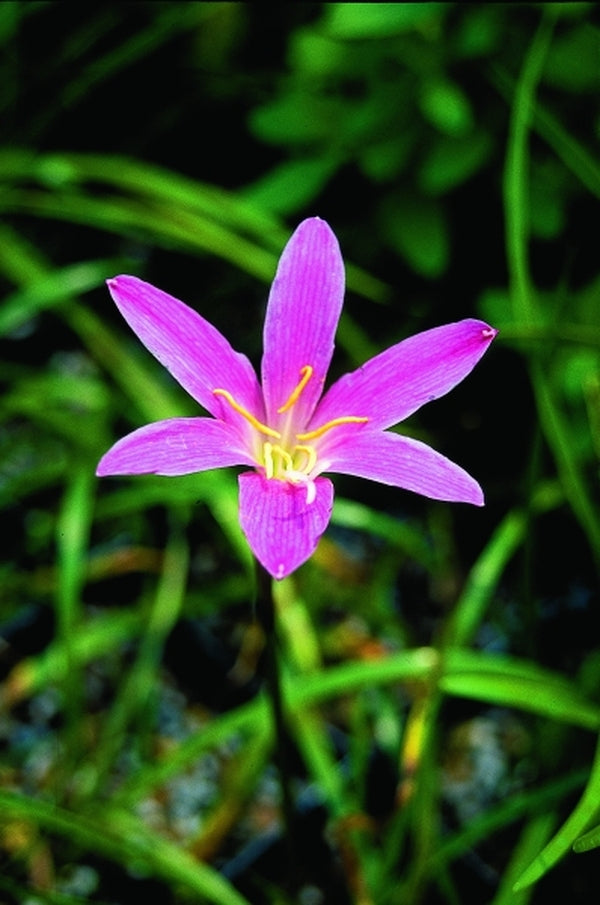Zephyranthes 'Ruth Page'
Ruth Page Rain Lily
This plant is not currently for sale. This is an archive page preserved for informational use.
Shop Available ZephyranthesItem #: 4043
Zones: 7b to 10b
Dormancy:
Height: 4" tall
Origin: Hybrid
Pot Size: 3.5" pot (24 fl. oz/0.7 L)
We have enjoyed this delightful rain lily from the breeding program of the late bulb great Thad Howard. This Zephyranthes rosea x citrina hybrid makes a clump that resembles a smaller Z. 'Grandiflora'. Since 'Ruth Page' was fertile, Thad used this for many of his great hybrids that would follow. For us, the flat green foliage is topped with large 2" bright pink flowers from early summer until frost...every time it rains. This cutie is also great for a container where a spot of cheeriness is needed.
Maintenance:
Zephyranthes, the rain lilies, are very low maintenance where they are winter-hardy (generally zone 7 and warmer). The foliage can be removed when it has turned brown and that is about it. Often even this is not necessary. Rain lily cultivars that multiply rapidly, and many do, often push bulbs up out of the ground as they get crowded. These need to be reset so the bulbs are underground, protected from freezing weather. When a rain lily gets to this stage it is a good time to dig the whole clump, divide into smaller clumps and replant them. This can be done most any time of the year.
Rain lilies are also very easy to grow from seed; usually germinating in a weeks time. If bulbs are grown continuously, which requires a sunny frost free location in the winter, they can bloom in a few years.
Rain lilies can be grown in pots where they are not winter hardy. Protect them from freezing over winter by either bringing them into a heated space and keeping them growing over winter, or allowing them to go dormant by drying them out and storing them in a cool but frost free location.
Growing Conditions:
A sunny location is best; more sun, more flowers. All will thrive in gardens of average moisture. None need the long hot dry spell that some species native to the southwest US and Mexico are subjected to in their native habitat. A few species, such as Zephyranthes candida from Argentina will thrive in a wet spot. All respond to rain with a huge flush of blooms. It often takes very little rain for them to bloom, often just the change in barometric pressure. No amount of irrigation will trigger the big flush of bloom, though some rain lilies will bloom intermittently and lightly between rains. Nearly all are winter hardy in zone 7 when planted in the ground. Bulbs should be planted underground with about 1" of soil on top of the bulbs.
Natural Impact:
Perhaps one would want the Zephyranthes to bloom continuously for months on end. Yet their nature to quickly produce a stunning display of bloom, where the day before there were none, adds a degree of drama that few other plants do. Gardens have been described as the slowest of the performing arts and the stunning display of Zephyranthes and their close cousin Habranthus demand that one go out into the garden and enjoy their performance. Broad masses of rain lilies make a dramatic display; either buy multiples or multiply the ones you have by division and/or seed.

-
Other Attributes
Genus: Zephyranthes

